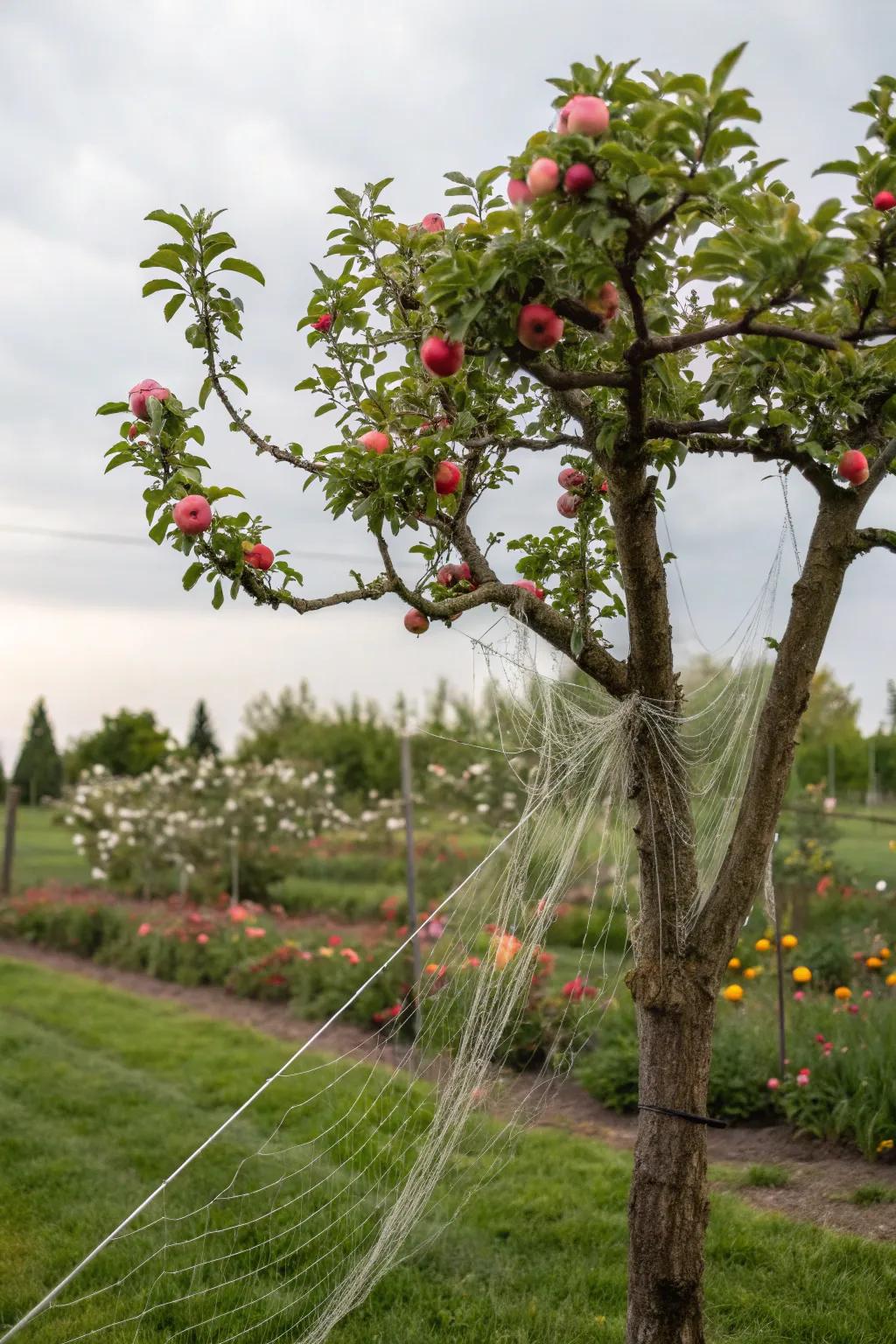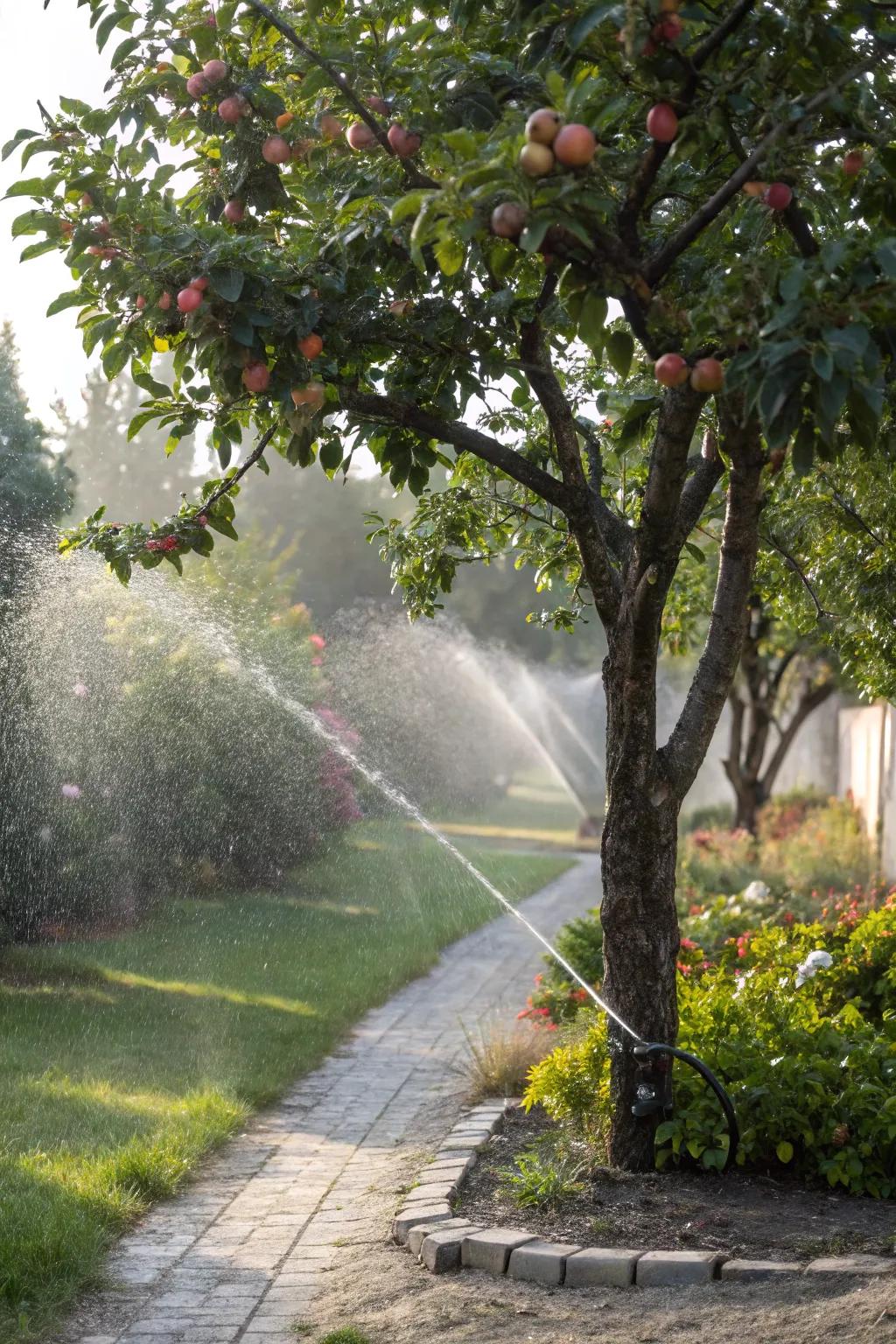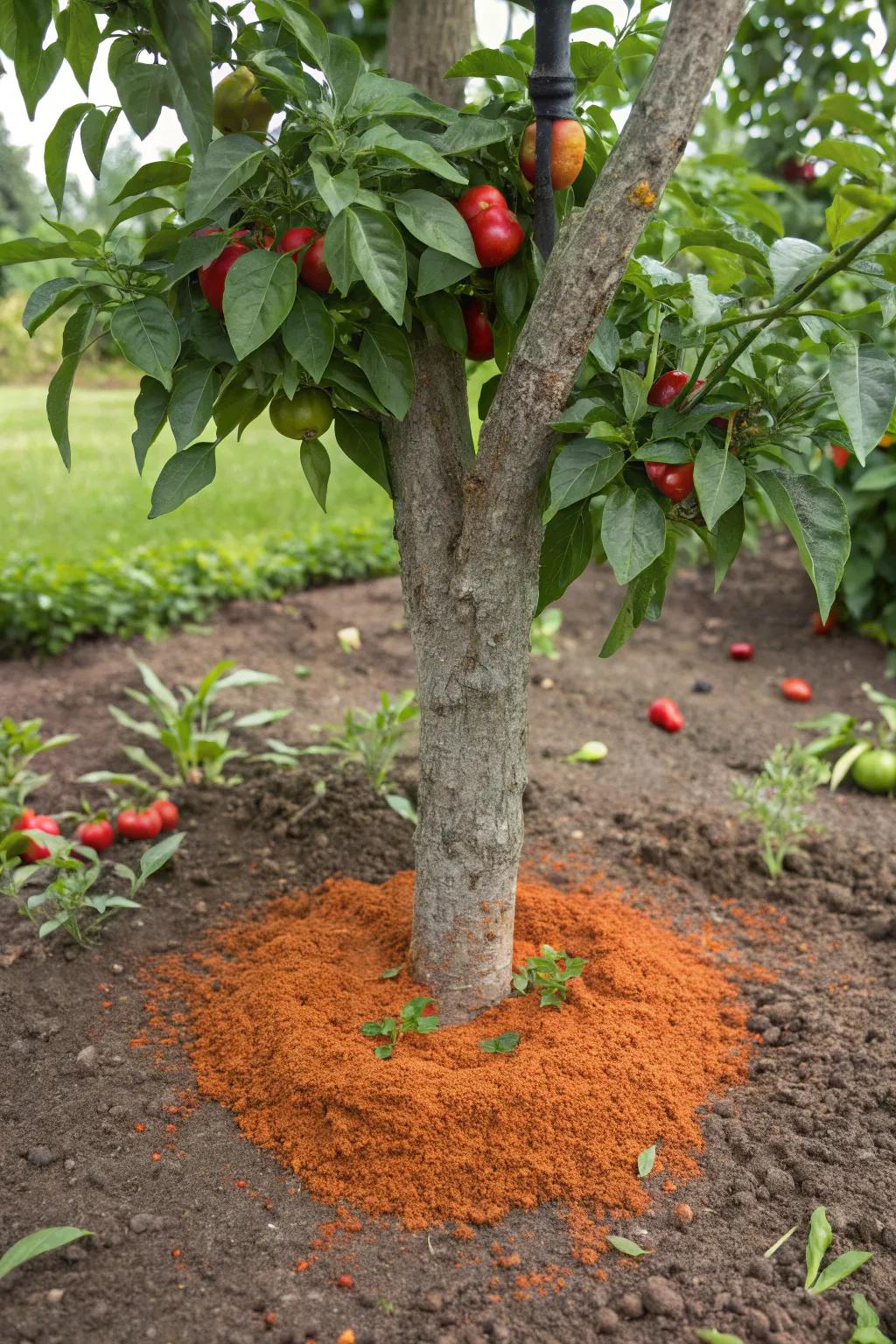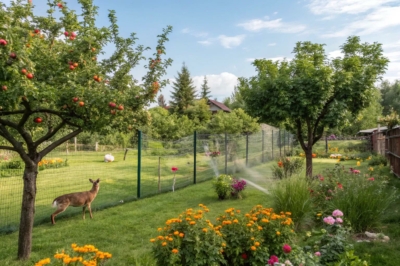1. Build a Protective Fence

A simple wire fence around each tree can work wonders. I once used sturdy mesh and T-posts to create a little fortress that kept my apple trees safe.
These products might be useful:
- Sturdy Wire Mesh: Secure your fruit trees with durable wire mesh. Keep deer and other animals at bay.
- T-Posts for Fencing: Use reliable T-posts to support your fence structure. Ensure stability and strength for protection.
- Fence Clips: Fasten your wire mesh securely with fence clips. Easy installation for a solid barrier.
2. Invest in Tree Guards

Wrap trunks with tree guards to prevent bark damage. I’ve used these in my orchard, and they work like a charm.
Explore these options:
- Sturdy Metal Tree Guard: Protect your tree trunks from deer with durable metal guards. Easy installation ensures safety.
- Adjustable Plastic Tree Guard: Safeguard trees with flexible plastic guards that adjust to various trunk sizes. Easy to use.
- Mesh Tree Bark Protectors: Defend tree bark with breathable mesh protectors. Prevent damage while allowing moisture through.
3. Create a Barrier with Fishing Line

Set up a fishing line around your trees at varying heights. This invisible barrier has kept my orchard safe for years.
You might give these a try:
- Clear Nylon Fishing Line: Securely guard your trees with durable fishing line, practically invisible to approaching deer.
- Garden Stakes for Easy Setup: Effortlessly support your fishing line barrier with sturdy garden stakes around your orchard.
- Heavy Duty Fishing Line Tensioners: Ensure your barrier is taut and effective using reliable fishing line tensioners.
4. Use Motion-Activated Sprinklers

Install motion-activated sprinklers to give deer a gentle nudge away. My garden has never been greener thanks to this surprise watering system.
A few relevant products:
- Motion-Activated Sprinkler System: Keep deer at bay and maintain healthy plants with this smart motion-activated sprinkler setup.
- Garden Motion Sensor Sprinkler: Protect your garden effortlessly by using this garden motion sensor sprinkler to deter unwelcome visitors.
- Solar-Powered Motion Sprinkler: Embrace eco-friendly gardening; install this solar-powered motion sprinkler to safeguard your fruit trees.
5. Introduce Predator Scents

Use predator urine to mimic the presence of natural threats. I’ve found this to be an effective, if unusual, way to keep deer from visiting.
Give these a look:
- Coyote Urine Granules: Scare off deer by placing coyote urine granules around your garden to mimic a natural predator.
- Fox Urine Spray: Apply fox urine spray to deter deer and protect your fruit trees with an easy application.
- Wolf Urine Repellent: Use wolf urine repellent to create a perimeter around your plants, effectively keeping deer away.
6. Rotate Deterrents Regularly

Switch up your deterrents every few weeks to keep deer on their toes. This tactic has kept my garden a step ahead of the local deer.
Maybe worth checking out:
- Motion-Activated Sprinkler: Keep deer at bay with sudden bursts of water to protect your garden effortlessly.
- Ultrasonic Animal Repeller: Scare off deer with ultrasonic sounds that human ears can’t hear for peace of mind.
- Solar-Powered Garden Lights: Illuminate your garden with changing patterns to confuse and deter nighttime deer visitors.
7. Add a Touch of Spice

Sprinkle cayenne pepper around the base of your trees. It’s a spicy surprise that deer tend to avoid.
You might like:
- Cayenne Pepper Powder: Sprinkle around your trees to deter deer naturally and keep your garden safe and sound.
- Spice Shaker with Large Holes: Easily distribute cayenne pepper to protect your trees effectively from deer intrusion.
- Organic Deer Repellent: Use alongside cayenne for a dual action approach to keep deer away from your trees.












